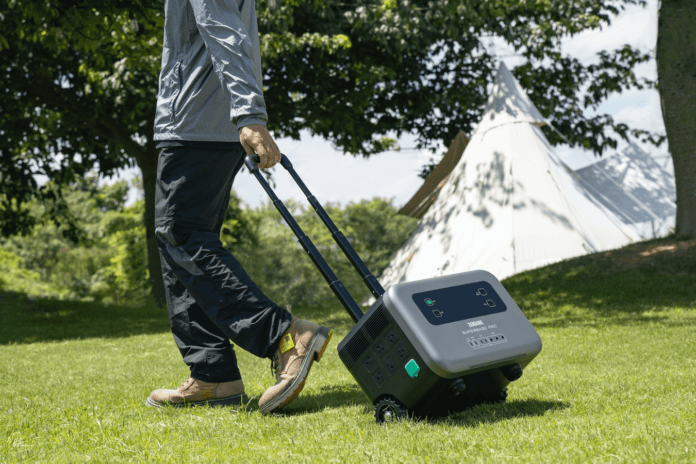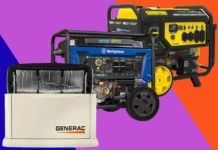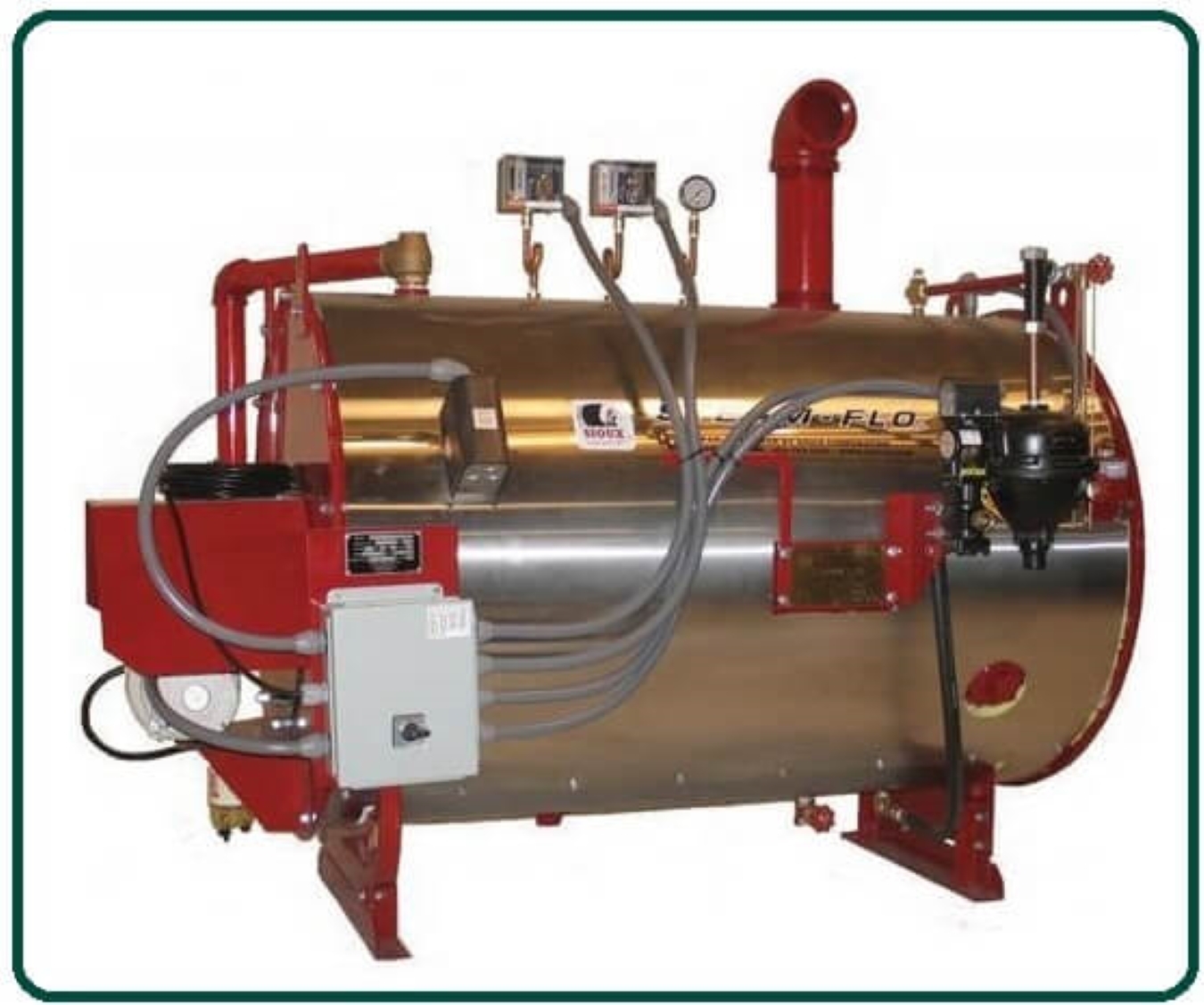How do you use a Portable Generator? Power outages can happen at any time, leaving you without electricity for hours or even days.
This can be particularly challenging if you live in an area that experiences extreme weather conditions.
Portable generators are a great solution to this problem, providing a reliable source of power during emergencies or when you’re on the go.
However, if you’re new to the world of portable generators, it can be overwhelming trying to figure out which one to buy.
That’s why we’ve created this beginner’s guide to portable generators.
In this post, we’ll cover everything you need to know about portable generators, including how they work, the different types available, and what features to look for when shopping for one.
By the end of this guide, you’ll be able to confidently choose the right portable generator to meet your needs and unleash your power.
How Do Portable Generators Work
Portable generators are a versatile and valuable tool for any individual or household seeking a reliable source of power on the go.
Whether you are camping in the great outdoors, hosting a backyard party, or experiencing a power outage, a portable generator can be your saving grace.
But what exactly are portable generators, and how do they work?
In simple terms, portable generators are compact and lightweight devices that convert mechanical energy into electrical energy.
They are equipped with an engine, usually fueled by gasoline, diesel, or propane, which drives an alternator to produce electricity.
The engine’s combustion process generates rotational motion, which is then transferred to the alternator.
The alternator, also known as a generator head, is responsible for converting the rotational motion into electrical energy.
This electrical energy is then available for use through power outlets or sockets on the generator.
Portable generators typically have multiple outlets, allowing you to power various devices simultaneously.
These outlets may include standard 120-volt outlets, USB ports, and even RV-ready outlets for powering recreational vehicles.
To start a portable generator, you usually need to pull a recoil starter cord or press an electric start button, depending on the model.
Once the generator is running, it will continue to generate electricity until you turn it off or run out of fuel.
It’s essential to understand the power capacity of your portable generator, as it determines the number and type of devices you can power simultaneously.
Most generators specify their power output in watts, with higher wattage indicating a greater capability to handle electrical loads.
Understanding how they work and their power capabilities is crucial for choosing the right generator for your specific needs.
So, let’s dive deeper into the world of portable generators and unleash your power!
Understanding Your Power Needs
Before investing in a portable generator, it’s crucial to have a clear understanding of your power needs.
Knowing how much electricity you need is crucial whether you’re organizing outdoor activities, getting ready for emergencies, or just for a backup power source.
Start by making a list of the electrical devices and appliances you intend to power with the generator.
Consider both the starting and running wattages for each item – The starting wattage is the extra power needed when an appliance is first turned on, while the running wattage is the power required to keep it running.
To determine the total power requirements, add up the running wattage of all the devices you plan to connect simultaneously.
Remember to account for any potential future additions or upgrades you may need.
It’s important to keep in mind that different appliances have varied power requirements.
Smaller gadgets like smartphones and laptops take very little electricity, but bigger appliances like refrigerators, air conditioners, or power tools demand much more energy.
To assist you in calculating your power needs accurately, refer to the user manuals or labels on your appliances.
These typically provide the necessary information about wattage requirements. If the wattage is not specified, you can use a wattage meter or consult an electrician for assistance.
Once you have determined the total wattage, it’s advisable to opt for a generator with a slightly higher capacity to accommodate any unexpected power surges or additional devices in the future.
It’s better to have more power available than to risk overloading the generator.
Understanding your power requirements will not only help you choose the right portable generator but also ensure that it can handle your electrical needs effectively.
Types Of Portable Generators: Inverter Generators Versus Conventional Generators
Inverter generators and conventional generators are the two primary types of portable generators to take into account.
Each has a unique set of benefits and things to keep in mind, so it’s crucial to know the distinctions before choosing one.
Inverter generators are known for their quiet operation, making them a popular choice for outdoor activities such as camping or tailgating.
They use advanced technology to produce clean and stable power, making them safe for sensitive electronics like laptops, smartphones, and TVs.
Inverter generators are also more fuel-efficient, providing longer run times on a single tank of gas.
These generators are typically more compact and lightweight, making them easier to transport and store.
On the other hand, conventional generators are known for their power and affordability.
They are designed to provide a steady flow of electricity, making them suitable for powering heavy-duty appliances and tools.
Conventional generators are often larger and heavier than inverter generators, making them less portable.
They are also typically louder in operation compared to their inverter counterparts.
However, conventional generators are often more affordable and can offer a higher wattage output, making them a practical choice for powering large appliances or multiple devices at once.
When choosing between an inverter generator and a conventional generator, it’s important to consider your specific needs and use cases.
If you prioritize quiet operation, fuel efficiency, and the ability to power sensitive electronics, an inverter generator may be the best choice for you.
On the other hand, if you require a higher power output and affordability is a key factor, a conventional generator may be more suitable.
Ultimately, understanding the differences between inverter generators and conventional generators will help you make an informed decision that aligns with your power needs and budget.
Factors To Consider When Choosing A Portable Generator
There are a number of things to think about when choosing a portable generator that might have a big influence on how you use it.
The noise level, fuel economy, and duration of the generator’s runtime are three critical considerations.
Noise Level
Firstly, noise level should be a top consideration, especially if you plan on using the generator in residential areas or during outdoor recreational activities.
Some portable generators can emit a loud and disruptive noise, which can be bothersome to both yourself and those around you.
Look for generators that are specifically designed to operate quietly, with noise levels as low as 50 decibels or less.
This will ensure a peaceful and undisturbed environment while the generator is running.
Fuel Efficiency
Secondly, fuel efficiency plays a significant role in determining the overall cost and convenience of using a portable generator.
Opting for a fuel-efficient model can save you money in the long run by reducing the amount of fuel needed to power the generator.
Look for generators that are equipped with technologies such as inverter technology or automatic idle control, which help regulate fuel consumption based on the required power output.
This will not only optimize fuel efficiency but also extend the runtime of the generator.
Runtime
Speaking of runtime, this is another essential factor to consider.
The runtime refers to the duration a generator can operate on a full tank of fuel before needing a refill.
It is crucial to assess your power needs and choose a generator with sufficient runtime to meet those needs.
Factors such as the size of the fuel tank and the generator’s power output will determine how long it can run continuously.
A generator with a longer runtime will provide more convenience, especially during extended power outages or outdoor activities where access to fuel may be limited.
In conclusion, considering the noise level, fuel efficiency, and runtime of a portable generator, you can ensure that you select a reliable and suitable option for your specific needs.
The factors mentioned will enhance your experience and improve the efficiency of your portable generator, allowing you to fully utilize its potential.
Features To Consider When Choosing A Portable Generator: Electric Start, Multiple Outlets, and UEL Gauge
Features To Consider When Choosing A Portable Generator: Electric Start, Multiple Outlets, And Fuel Gauge
Every new user of portable generators should keep an eye out for a few key characteristics.
These features may greatly increase the utility and convenience of your generator, giving you access to energy whenever and wherever you need it.
Electric Start
First and foremost, an electric start feature is a game-changer. Gone are the days of struggling with pull cords and hoping for a smooth start.
With an electric start, all it takes is the simple push of a button to get your generator up and running. This feature is especially handy in emergency situations when time is of the essence.
Multiple Outlets
Another essential feature to consider is multiple outlets.
Having multiple outlets allows you to power multiple devices simultaneously, giving you the flexibility to meet all your power needs at once.
Multiple outlets are essential for various tasks such as camping, working on a job site, and charging devices without any hassle.
Fuel Gauge
Lastly, a fuel gauge is a must-have feature for any portable generator.
It provides you with a clear and accurate indication of how much fuel is remaining, preventing any unexpected power outages.
This feature allows you to plan and manage your fuel usage effectively, ensuring that you never run out of power when you need it the most.
Safety Precautions When Using A Portable Generator: Proper Grounding And Ventilation
Safety should always come first when employing a portable generator.
In order to utilize your portable generator safely and effectively, two essential safety measures must be followed: proper grounding and ventilation.
Grounding
First and foremost, proper grounding is essential to preventing the risk of electric shock.
Portable generators produce electricity, and if not grounded correctly, there is a potential for electrical current to travel through the generator’s frame, leading to serious accidents.
To avoid this, it is important to connect the generator to a grounding rod using a grounding wire.
This will help divert any electrical current away from the generator, reducing the risk of electric shock.
Ventilation
Ventilation is another critical aspect to consider when operating a portable generator.
These machines produce exhaust fumes that contain carbon monoxide, a colorless and odorless gas that can be extremely dangerous if inhaled in high concentrations.
To ensure proper ventilation, it is essential to operate the generator in a well-ventilated area, preferably outdoors, away from windows, doors, and vents.
This will allow the exhaust fumes to disperse and prevent the buildup of carbon monoxide.
Carbon Monoxide Detectors
In addition to proper grounding and ventilation, it is also recommended to install carbon monoxide detectors near the areas where the generator is being used.
These detectors will emit an alarm if carbon monoxide levels become unsafe, providing an extra layer of protection for you and those around you.
Remember, portable generators can be a valuable source of power during emergencies or when you are off the grid.
However, their misuse can lead to serious accidents or even fatalities.
Portable Generator Maintenance: Regular Inspections And Oil Changes
Regular inspections and oil changes are crucial for the proper maintenance and care of your portable generator.
Just like any other machinery, portable generators require routine attention to ensure optimal performance and longevity.
First and foremost, it is essential to conduct regular inspections of your generator.
This includes checking for any signs of wear and tear, loose or damaged parts, and any potential leaks.
Inspecting the fuel and oil levels is also essential to ensure that your generator is always ready for use.
Additionally, inspect the air filters and clean or replace them as needed to ensure proper airflow and prevent clogging.
One of the most important maintenance tasks for a portable generator is changing the oil. The oil lubricates the engine and helps keep it running smoothly.
Over time, the oil can become contaminated with dirt and debris, which can lead to engine damage if not addressed.
It is recommended to follow the manufacturer’s guidelines regarding the frequency of oil changes.
However, a general rule of thumb is to change the oil after every 25-50 hours of use or at least once a year.
When changing the oil, make sure to use the recommended oil type and follow the proper procedure outlined in the user manual.
This may involve draining the old oil, replacing the oil filter if applicable, and refilling it with fresh oil.
Proper disposal of the used oil is essential, as it is considered hazardous waste and should be taken to a designated recycling facility.
In addition to regular inspections and oil changes, it is also important to keep your portable generator clean and protected from the elements.
Regularly removing dust, dirt, and debris from the exterior and ensuring proper ventilation will help prevent overheating and maintain optimal performance.
Final Thoughts And Recommendations
As we come to the end of our beginner’s guide to portable generators, it’s important to summarize the key points and offer some final thoughts and recommendations for those considering purchasing their first portable generator.
Firstly, it’s crucial to assess your power needs before making a decision. Consider the appliances and devices you would like to power during an outage or when you’re on the go.
Calculate the total wattage required and choose a generator that can handle that load comfortably.
Next, pay attention to the fuel type and capacity of the generator. Gasoline-powered generators are common and readily available, but they require regular refueling.
On the other hand, propane or dual-fuel generators offer longer runtimes and reduced maintenance requirements.
Consider the portability factor as well. Look for generators with built-in handles or wheels for easy transportation.
This is particularly important if you plan to use the generator for outdoor activities or in remote locations.
Noise levels can also be a significant consideration. If you value peace and quiet, opt for a generator with a lower decibel rating.
Many manufacturers now offer models specifically designed for quiet operation, making them suitable for use in residential areas or camping grounds.
Durability and reliability are paramount when investing in a portable generator. Look for reputable brands known for producing high-quality products.
Reading customer reviews and seeking recommendations can help you make an informed decision.
Lastly, don’t forget to familiarize yourself with the maintenance requirements of your chosen generator.
Regular servicing and proper storage will prolong its lifespan and ensure it’s ready to perform when you need it most.
In conclusion, purchasing your first portable generator is an investment that requires careful consideration.
Further Reading And References
lowes.com: How to Use a Portable Generator
What Is An Inverter Generator: Easy Decision – Inverter or Generator




